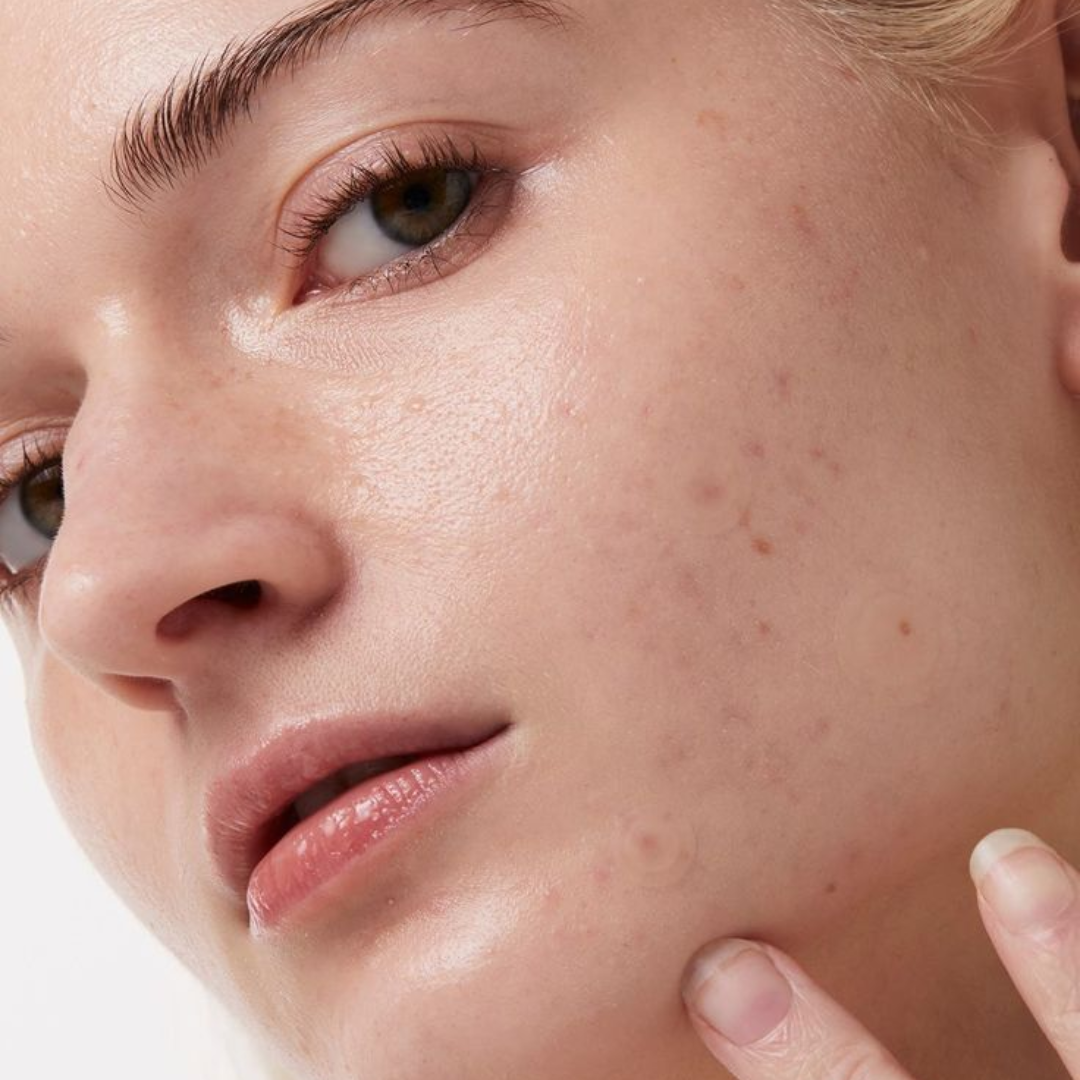
What are the different types of acne?
Share
Acne is one of the most common dermatological conditions, affecting millions of people worldwide. It is characterized by the appearance of skin lesions, often on the face, but also on the scalp, back and chest. Its origin is complex and multifactorial, mainly involving the sebaceous glands and sebum secretion. To better understand this condition, it's essential to distinguish the different types of acne and their specific characteristics.

1. Retention acne
Retention acne is often considered the initial form of acne. It is characterized by clogged pores, leading to the formation of blackheads(open comedones) or whiteheads(closed comedones). These lesions appear when the sebaceous glands produce excess sebum, leading to a blockage of thehair follicles.
Formation mechanism
- Excessive sebum production by the sebaceous glands accumulates, combined with dead skin cells, clogging pores.
- This hydrolipidic film, which normally protects against external aggression, becomes too thick and loses its barrier function, encouraging the appearance of blackheads.
Aggravating factors
- Oily skin is particularly prone to this form of acne, due to its abundant sebum secretion.
- Oily scalps can also be affected, favoring imperfections on the hairline.
2. Inflammatory acne
When comedones become completely blocked, they can become infected, giving rise to inflammatory acne. This form of acne is marked by red, painful, swollen lesions.
Different types of inflammatory lesions
- Papules: These are small red bumps that form when the walls of the hair follicle are irritated.
- Pustules: These lesions contain pus, the result of the body's immune response to a bacterial infection.
- Nodules and cysts: These develop deep under the skin, causing significant pain. These deep lesions are often a sign of overproduction of glans secretion and can leave scars.
The role of sebum and bacteria
Sebum encourages the proliferation of Propionibacterium acnes, a bacterium naturally present on the skin. When it multiplies excessively, it causes inflammation of the hair follicle.
3. Cystic acne
Cystic acne is the most severe form and can be particularly painful. It is characterized by the formation of deep cysts under the skin. This type of acne can have a significant psychological impact because of the scars it can leave behind.
Causes of cystic acne
- Excessive sebum secretion, often linked to hormonal factors.
- Deep inflammation of the sebaceous glands.
Treatment and prevention
- Conventional topical treatments are often ineffective against this severe form. Consultation with a dermatologist is essential.
- Regulating sebum production is crucial to prevent recurrences.

4. Hormonal acne
Hormonal acne mainly affects adult women, particularly around the menstrual cycle, during pregnancy or when stopping the contraceptive pill. Androgen hormones stimulate the sebaceous glands, increasing sebum secretion.
Manifestations and location
- It often appears on the lower face, jaw and neck.
- This form of acne is often accompanied byoily skin and excess sebum.
Care and management
- A skincare routine adapted to oily skin can help controlexcess sebum.
- Hormonal treatments, such as the contraceptive pill, can be effective in regulating sebum production.
5. Acne fulminante
Acne fulminante is a rare but serious form of inflammatory acne. It is characterized by the sudden appearance of inflamed nodules, often accompanied by systemic symptoms such as fever and joint pain.
Causes and triggers
- It is often associated with severe hormonal imbalance.
- Excessive sebum secretion plays a key role in triggering this form of acne.
Treatment
Immediate medical treatment is required. Oral retinoids, such as isotretinoin, can be prescribed under strict supervision.
6. Cosmetic acne
This form of acne is caused by the use of unsuitable beauty products that clog pores. The contents of sebum can interact with the components of cosmetics, aggravating imperfections.
Products to avoid
- Comedogenic products that clog pores.
- Excess make-up that prevents the skin from breathing and promotes clogged pores.

7. Mechanical acne
Also known as friction acne, it's caused by constant rubbing of the skin against objects, such as masks, helmets or tight clothing. This friction irritates the sebaceous glands and increases sebum secretion.
Common triggers for all types of acne
Excess sebum
Excess sebum is the main cause of acne. Normally, the hydrolipidic film protects the skin against external aggression, but when over-produced, it promotesclogged pores and inflammation.
The role of UV rays
Contrary to popular belief, UV rays do not treat acne. They can even worsen the condition by thickening the skin and increasing sebum secretion.
Impact of hormones
Hormonal fluctuations, particularly during adolescence, increase sebum production and sebaceous gland activity.
Prevention and treatment: the importance of an adapted routine
- Gentle cleansing to regulateexcess sebum thanks to probiotic andsalicylic acid-based treatments
- Use of non-comedogenic products to preserve the skin's barrier function.
- Even oily skin needs moisturizing. Good hydration helps form a protective barrier and balance sebum secretion.
Dermatological consultation
A dermatologist will be able to recommend suitable treatments for each type of acne, depending on severity and underlying cause.
